Do you want to teach your children Spanish with simple and quick lessons? Do you want an effective curriculum? If so, then you have to check out the newly released Song School Spanish curriculum by Classical Academic Press.
"Here comes maestra, Hola, Hola! Teach los estudiantes. Students!" These words seem to be ingrained in my mind. I can't shake the words from my head. The other day I overheard my husband whistling the catchy tunes from the curriculum CD. He didn't know the title of the song he was whistling because he is usually at work. He did hear the music enough with minimal exposure to at least recognize the tune. Just imagine what he could learn if he heard the words sung over and over again. Your child can learn Spanish through song and music too.
The curriculum is well-organized by chapter numbers. Each weekly chapter lesson introduces a new set of vocabulary words and activities within 3-5 pages. Over 100 words are taught in Spanish using a thematic vocabulary-based approach.
The topics addressed include many popular thematic vocabulary groups. See the following list in the photo below.
What's Included?
The required teacher's manual or edition is in soft paperback format and contains 31 weekly lessons that are meant to be implemented throughout the entire school year. One lesson (chapter) is learned each week. The lesson activities presented in the curriculum include pronunciation files, songs, games, short stories (familiar fables and fairy tales), basic workbook pages, and scripts or puppet plays. A table of contents and introduction is found at the beginning of the teacher manual. The introduction includes information about the target grade range, the teaching method, additional resources available, Song School products sold, and a suggested three-day teaching schedule. The book also contains answer keys, reduced-sized student workbook pages, teacher tips, and classroom activities. There are two student workbook pages reduced in size in order to fit onto one teacher page enabling the parent to quickly glance at the material for the day without having to flip through numerous pages. Here is a link to the sample of the teacher's edition if you would like to take a peek at the organization of the program.
Are you looking for more of a challenge for your students? The teacher manual also contains over 40 reproducible pages of advanced activities to enrich and extend the lessons for the eager learners. Alyssa completed each lesson and found them quite enjoyable. We used these worksheets to extend the lessons so that Spanish could be done more often (on a daily basis) rather than only three days a week. The extra worksheets and answer keys can be found on pages 85-147. There are a wide variety of activities to complete including but not limited to word searches, crossword puzzles, scrambled sentences, drawing (fun and following directions), song usage, grammar practice, coloring, naming, matching, writing, direct translations, and question-answer format. The teacher edition contains an extra worksheet activity for each chapter and two pages for review chapters. The final review at the end of the curriculum has four extra sheets to practice a variety of concepts presented in the curriculum. All text and illustrations are printed in black-and-white. Here is a photo of an extra worksheet found at the back of the teacher edition. My daughter was overly excited about finding her first Spanish word.
The soft paperback book contains consumable workbook pages that are printed using black-and-white illustrations and text. The student workbook begins with an introduction to Song School Spanish which discusses pacing chapter lessons and grammar, information about code switching, and additional resources. You will also find a suggested schedule for teaching the curriculum. The schedule is based on a three-day simple schedule however the curriculum is very flexible so you can always extend the lessons or change the schedule with ease. Individuals with no Spanish background will find the pronunciation guide and the accent information at the front of the student workbook helpful. I would read this to familiarize yourself with the language before beginning any lessons. The pronunciation guide discusses the consonants and vowels of the Spanish alphabet. The age-appropriate workbook activities include but are not limited to exercises such as matching, labeling, coloring, circling the correct answer, drawing exercises, printing, and tracing dotted letters and words. Two appendixes can be found in the back of the student workbook. Appendix A is a four-page (front and back) "Chapter-by-Chapter Glossary" listing each of the vocabulary terms by chapter. The chapter numbers and thematic group are in bold print. Appendix B is a three-page "Alphabetical Glossary" listing each vocabulary word. All Spanish words are in bold print and the English translations are in regular print. There are eight pages at the back of the book containing cutouts that accompany several exercises throughout the book. These cutouts are colored and used as puppets or during memory games. We will often use permanent tape to attach the cutout to a craft stick. Here is a link to a sample chapter found in the student workbook.
I am a firm believer that the use of music and songs help children learn and retain the material they are studying. The music CD contains forty-four tracks including a variety of music styles or genres. The lyrics are sung by both male and female voices with upbeat tunes that motivate you to sing and dance. Children can even experience the sound of acapella through the bonus songs. The music and songs are great for auditory learners.
The Song School Spanish CD can also be purchased individually for $12.95 for individuals wanting to start singing Spanish songs with children younger than the intended grade levels. This option makes it easy for individuals also needing a replacement CD. Please remember that if you purchase the student workbook then the CD is included inside the book and can be found at the back of the book.
Bonus Materials
The first two free resources can be downloaded from the student workbook description page.
The first two free resources can be downloaded from the student workbook description page.
- MP3 Pronunciation Audio Files for Chapter Vocabulary
- Song School Spanish Bonus Songs
- Free Resources Scroll Down to Song School Spanish Coloring Pages (There's one page for each word.)
- Headventure Land - A FREE website offering the FlashDance Game to reinforce vocabulary words.
How Much Does This Curriculum Cost?
The teacher edition and student workbook are available as separate purchases. Each book costs $24.95. The complete set can also be purchased as a bundle for the discounted price of $66.95.
How We Used Song School Spanish
I used the curriculum with my five-year-old daughter Alyssa approximately three to five times a week. I prefer doing Spanish more frequently (5-6 times a week) with shorter segments or sessions. There are days when my daughter is thoroughly engaged and has a strong desire to work for longer time periods. This is usually the case for both of us. Spanish will last on an average about 30-45 minutes or longer in our house even though lessons on the suggested schedule state that lessons should take about 10-20 minutes and should occur 3-4 times a week. Trust me ... you can definitely finish the lessons provided in the time period the company recommends.
We attempted to follow the recommended schedule suggestions in the book, however we followed the schedule with a more relaxed approach. What do I mean by that? If Alyssa wanted to complete all of the lesson pages in advance then I would allow it on most days. However, we almost always extended the lesson a few more days by using the extra practice sheets, color pages, puppets, and Headventure FlashDance online game. I also added in my own activities or games several times throughout the week to extend the lesson. We listened to the CD at the beginning of each day's lesson. On days when lessons were particularly short, she was allowed to play the FlashDance online game to practice vocabulary. Each day usually ended with us listening to the songs on the CD again. Furthermore, she is allowed to hear the songs on the CD anytime she wants during her free time.
There were a few occasions where my daughter zipped through the lessons. After assessing her knowledge and if she mastered her vocabulary, then we would progress to the next chapter. Many of the lessons in the beginning were a review for Alyssa but the curriculum still maintained her attention and interest.
Let me tell you more about our typical week where we try to follow the suggested schedule but we usually end up adding more activities into the day's lesson just because we love the language.
First Day
On the first day of every new chapter my daughter listens to the pronunciation of each word presented under the category "Words or Phrases to Learn." Occasionally, she would review the pronunciation of vocabulary words for previously taught chapters in addition to the new words. Then, we proceeded to the next part of the lesson by having her track (point to) each word while reading it aloud after the native speaker stated each individual word. I have her listen to the pronunciation of the words a second time so that she can study the meanings and spellings of each word. Next, she listened to the new "Chapter Songs" while pointing to the words found in the lyrics. This has helped her see the words before attempting to sing the songs. I noticed she was confused at first and making up words because she couldn't hear or understand all of the lyrics. Each new chapter introduces 1-4 songs. A few of her favorite old songs are also reviewed and played on the first day. She tells me which ones she prefers to hear.
We listen to the CD more than once a day but definitely for every session. This is when Alyssa goes a little CRAZY! If the lesson is too short for her then she listens to the music while coloring the vocabulary pages. We use these coloring pages as posters for the weekly lessons. Each chapter's color pages are displayed on the wall for review and homemade games. There are some weeks that we cover more than one chapter a week if she masters the words.
I have her listen to the pronunciation of the words again. She tracks the words while reading and repeating them after the speaker. We practice the words together using a conversational approach or discussion format. I assess her knowledge of the words from memory only after she listens to the chapter songs for the lesson once more. This is when the "Chapter Lesson" is introduced which usually focuses on grammar. She will begin the exercises and activities included under the categories "Practice Your Spanish," "Play a Game," "Chapter Story," "Put on a Puppet Show," "Ask a Friend," and "Sing and Play." Puppet play is another one of her favorite parts of this curriculum. Alyssa usually asks to complete all of the workbook exercises in one day. I will often allow her to complete all of the pages even though the recommended schedule suggests stopping at "Show What You Know" activity. This is also when I ask Alyssa to narrate her new vocabulary words and attempt to sing the songs from memory. The drawing exercises may require the child to label the picture by circling the correct Spanish word. Alyssa has drawn facial expressions or feelings on blank faces, a family portrait, her teacher, and recently she drew a picture of our house being built. What's funny is that she drew me wearing jewelry and very colorful clothes. I never wear earrings and striped, colorful clothing. I included a wide variety of photos below that show the types of activities done on the second day.
Third Day
We begin the daily lesson having Alyssa recite from memory any new words and songs learned. She will often sing several additional songs memorized from previous chapters. We listened to the chapter songs multiple times while singing and dancing. I make sure that all the displayed coloring pages are finished by this point. They usually are colored by the first or second day. We play games reviewing the posters (color pages) on the wall. If she completed the "Show What You Know" pages then I photocopy an extra worksheet as seen below from the teacher edition for her to complete. She spends some time on the CAP website and plays Headventure several times challenging herself to beat her own score each time. We graph her scores so that we can track them. She will often start with the easy level and work towards the more difficult level. Although, I must say I didn't noticed much of a difference in the difficulty of each level. We end the day by reviewing and listening to all of the music on the CD again.
 |
| Chapter 1: Greeting Words (Extra Worksheet) |
The fourth and fifth day was used as a review period for all chapters and game day. We played Spanish games using our homemade flash cards. I will often come up with some kind of hands-on activity or game to play in order to explore the language using the vocabulary she has learned from ALL of the chapters. I also have her use FlashDance several times on these days. We listened to the CD multiple times, pull out the musical instruments, and dance together as often as possible. Alyssa will also use this day to perform dance routines she makes up for each song. We play with the cutout puppets from the student workbook and retell the stories or familiar fables. I will also make use of the bilingual readers and games meant to be used with the other Spanish curriculum for older children sold through Classical Academic Press. This is a great way for Alyssa to expand her knowledge of Spanish vocabulary.
What We Liked
- I love the flexibility of the program. The lesson length can vary from 10-20 minutes a day to 45 minutes once a week. In our case we spent 30-45 minutes a day. The lessons are also flexible enough to allow for extensions for advanced learners or adaptations for younger children. It can be used with multiple children within the K-3rd grade range. This is especially important for larger families with multiple children between the ages of 5-10. I believe that the music could be used with children as young as 2 or 3 and the workbook pages could be used with children up to age 10. You would only need one curriculum to use with all of your children. I believe this curriculum is flexible enough to use with co-ops, homeschool families, or in the classroom. It can be used in various settings making it a much desired curriculum for everyone interested in their students learning Spanish.
- There is a suggested three-day schedule provided the teacher's edition and the student workbook making the lesson plans easily accessible for both the parent or the child working independently through the book.
- The extremely short lessons are sequentially taught so that the child takes graduated steps progressing through the curriculum while addressing all three of learning modalities: auditory, tactile or kinesthetic, and visual.
- Grammar lessons were explained in"gentle" terms. Grammar was introduced to students in the form of chapter lessons. Children will learn about definite articles, accent marks, punctuation marks, nouns, noun gender agreement (masculine and feminine), plural and singular forms of commands (verb conjugations), and so much more. I was surprised by what Alyssa learned through these lessons. I did not push mastery of the grammar concepts. I was hoping more for exposure and that is exactly what I got.
- The number of vocabulary terms introduced are kept to a minimum allowing children to be more successful. Children are not overwhelmed with a long list of terms to learn. There are approximately 2-10 new words each chapter. For most chapters, there are an average of 4-5 vocabulary words presented during each lesson. The chapters discussing colors, numbers, and commands tend to have more terminology introduced.
- The curriculum has a built in review component. There are review lessons in the student workbook that appear every 4-6 chapters. The students are constantly reinforcing and utilizing previously learned concepts and vocabulary throughout the year. The curriculum contains six review chapters occurring on chapters 4, 10, 14, 20, 25, and 31. Each review lesson includes a section titled, "Master Your Songs" which contains all of the songs from the previous lessons up to that review lesson. I was surprised that the review chapter lasted one full week or "una semana" yet in the end it was a blessing because we were sick that week. It gave my daughter and I the time necessary to thoroughly cover and master the vocabulary at a slower pace while recovering.
- The online game is in multiple choice quiz format which can also serve as a pre-assessment. Some children will think that they are playing a game yet parents can assess what information has in fact been learned and what needs to be reviewed. I will often look ahead and use the game as a pre-test with Alyssa. I tell her that she will play the game but she might not recognize or know all of the words shown. I tell her that I want to see what she knows ahead of time so that I can see what she learns as we study the language. She scored a 98% on her pre-test before beginning chapter one. This let me know that we could quickly go through the first four lessons at the beginning of the book. However, when she was pre-assessed using the chapter 10 review game I realized we could slow things down so that she can understand and learn the grammar and vocabulary better. Her score was in the 80's. I noted which words she knew and didn't know and checked the corresponding chapters as to where each word was found. This allowed me to spend more time on the words or chapters that she was unfamiliar with and less time on words she had mastered.
- In my opinion, the songs are imperative for every lesson. Children learn and retain so much through music and songs. It helps even more when they are allowed to use movement with music. The new catchy tunes are refreshing yet there is still a familiarity with several tunes or songs. For example, "If You're Happy and You Know It Clap Your Hands" is the tune used when children are learning about Spanish feelings or emotions. We sang the songs throughout the day when playing, in the car, upon waking up, during bath time, and even before bed. If something reminded my daughter of a Song School Spanish song, then she would start singing it no matter where we were at the time. Any curriculum that incorporates music into the day is high on my list.
- Minimal prep is required to get started with this curriculum. Seriously, in the beginning I glanced ahead to see the schedule for the day, but once you have a routine established it comes natural. Prep is limited to photocopying extra worksheets from the teacher edition and having the CD readily available for the lesson. Our CD has found a permanent place in the classroom CD player where most of our time is spent during the day. It hardly ever leaves this location unless we are of course traveling in the vehicle or upstairs listening to the songs. The CD accompanies us every time we leave the house to run errands or go to appointments.
- At first, the MP3 files were part of a continuous recording which made it difficult to use and track word pronunciations for each chapter session which was a huge part of our day. We had to note the time the last chapter recording stopped or listen to the entire recording for all the chapters. It was difficult trying to remember where the new chapter recording started because sometimes I forgot to write down the time. I am happy to say that after a fellow crew member contacted the company, they immediately made the recordings more accessible to users that relied on the pronunciation files for clarifications. The recordings have already been divided into separate MP3 files for each chapter making it so much easier for home educators to go directly to the specific chapter they are working on that week. I have Alyssa listen to the correct pronunciation of each word as indicated in the first day schedule and on several other occasions, therefore this CHANGE was greatly appreciated. Customer service is outstanding!
- Several lessons include common stories, fairy tales, and fables that children are familiar with such as, "The Three Little Pigs," "The Tortoise and the Hare," "Goldilocks and the Three Bears," and "The Ant and the Grasshopper." This is where I noticed the use of the code-switching as a more prominent technique utilized to teach Spanish. Alyssa made immediate literature connections with English stories or books when reading several of these Spanish chapter stories aloud.
- We love using the vocabulary color pages as posters for the week. The posters (pages) are displayed on the wall during a week's chapter lessons. The color pages are later stored in a report cover for her to review after the chapter has been completed and terminology has been mastered. I appreciated the fact that the posters included singular and plural forms of many vocabulary terms on the actual coloring pages. At first I didn't notice the plural forms because of the print size, but this feature sparked many "teachable moment" discussions with my daughter. It's hard to see in the photo below, but the plural form was also provided for the words el lapiz and el libro. You'll have to accept my apologies for not adding accents to Spanish words. I haven't figured out how to do that with my computer yet.
- Children must be able to read and write if you intend on using the curriculum to its full extent. My daughter is a fluent reader and writes well for her age. However, many kindergartners and some 1st graders are still working on or improving letter formations and learning how to read. Therefore, this curriculum may be more appropriate for children in the middle of 1st-3rd grade unless the child is working an a higher level or has advanced fine motor and writing skills. The other option is for the parent to ask the student to verbalize the answers instead of responding in writing. This will enable younger children to participate.
- The main components of this curriculum are the workbook and CD. The lessons may be writing intensive for some children. I have worked with my share of children and I can remember several children that refused to do any kind of worksheet. You may need to adapt the lessons or even skip the workbook pages for a child that dislikes worksheet-based programs. Make sure that you have another way to assess their vocabulary knowledge or make the lesson more hands-on. The CD is an effective way to learn the vocabulary.
- Several of the games may need slight modifications for the home educator as they seem more geared to the classroom or for larger families. Interaction with more than one person was mentioned. These are simple adjustments and most activities can be done with a parent or sibling if you have more than one child in your family. For example, Chapter 2 mentions that the class can sing the "Yo me llamo" song substituting names of students from the class into the song. Each student can point to a new student and replace their name with the new student's name. This would be an easy fix. The parent can use family names and photo puppets. The student book asks the child to "find a friend" to complete activities the child would simply work with a parent or sibling. I noticed that in Chapter 11, the child is asked to sing a chapter song with a group of friends. I am homeschooling an only child so we will need to change or make adjustments to this activity. If the teacher asks more than one person to follow a command, then there needs to be more than one other person participating to play this game. My only hope is that her father is at home that day. My other option would be to teach the song to a group of her friends and have them play together. We could take turns, but she won't learn the plural form of the commands unless I participate when commands for more than one person are given. Chapter 14 has an "Exchange Lapices" activity requiring three other students in the class to participate. We could still do this activity with just the two of us several times that week to increase conversational skills and practice manners rather than trying to find three people for the game.
- Some people may not find the teacher edition particularly useful. I personally didn't find the teacher's manual that helpful or beneficial based on my prior experience with the language. However, I believe that it might be a great tool for parents without a background in the language. There were several teacher tips provided and informative notes regarding grammar. I have a feeling that many Spanish teachers or individuals with a strong background in the language would already be familiar with the tips and teaching ideas mentioned. If more teacher tips and hands-on game or activities were included in the book, then I am sure that I would have utilized it more often. However, please remember that the extra worksheets are provided at the back of the teacher edition. Your children may want to complete those activities or you may eventually decide to utilize them when teaching.
- The pace for the alphabet chant may be too fast for many young children. In the beginning Alyssa was frustrated that she couldn't learn the song. After weeks of practice, she was finally able to memorize and recite the song with few errors. The pace of this song may cause some children to become easily frustrated and possibly give up. It is important to find ways to help your child learn the songs and to know that time and practice is necessary to learn more challenging songs.
- I wish that the teacher's manual was spiral bound making it easier to lay flat when photocopying the extra challenge worksheets. I had a difficult time making clear copies for my daughter. The spine binding was very tight. My other suggestion would be to add a CD to the teacher manual which would store the blackline PDF masters of the extra worksheets making copying easier for families. This could also be available as a separate purchase for individuals not wanting the teacher edition but still wanting access to the extra worksheets.
- I was hoping for the inclusion of more hands-on activities and games in the teacher edition. There were only a few additional activities mentioned that didn't involve worksheets. Although my daughter enjoys completing worksheets; I prefer the use of more hands-on activities with younger children. Is there a possibility that the company could add more printable game ideas and hands-on activities to the curriculum or to the free resource section of the website?
- I hope to see additional game options developed for Song School Spanish on Headventure in the near future. The music in the background is somewhat distracting once terminology gets harder. At first my daughter was dancing to the music, but then I noticed she muted the sound because it was distracting her from thinking about the task at hand.
- I saw that the Song School Latin program had a DVD set available for purchase. I would absolutely love to see a Song School Spanish version in DVD format. The children would be able to learn from another preferably native speaking teacher and not just from a computer game or always from their parents. It would provide more variety with lessons. I would use the DVD set as a supplement to extend the weekly lessons.
Recommended
I highly recommend this product for all homeschool families teaching children in grades K-3. This curriculum would especially benefit those using a Classical or Charlotte Mason approach. The Charlotte Mason approach suggests keeping lessons short for young children; many educational theorists take on the same approach. I often thought to myself, "Did I forget something?" because the lessons were so short. You can teach your children Spanish in a short amount of time with this curriculum. You can easily squeeze in a lesson between core subjects. Not to mention, this curriculum is great for parents with NO Spanish background. You do not need to have any prior knowledge or experience with the language in order to use and teach with this curriculum. This makes the program beneficial as a foundational program for both the child and parent.
If you are looking for a comprehensive and complete Spanish curriculum that is not teacher intensive needing minimal prep, you should definitely consider this curriculum set. The flash cards are not necessary in order to utilize this curriculum to its full extent. Alyssa and I made our own flash cards and used them to play various homemade games to help increase her comprehension and improved her vocabulary recognition. However, if I had the funds then I would purchase them to save time and money. The added benefit of having my daughter make the flash cards is that children remember better when they also write what they are learning. This curriculum can be used with multiple children or with individual students. It can also be used in a co-op or classroom setting. It is definitely possible for this curriculum to be done independently by older children that are already reading and writing proficiently. I believe that Alyssa could have completed the curriculum independently after the routine was established. I just prefer to be involved when teaching Spanish lessons.
If you are looking for a comprehensive and complete Spanish curriculum that is not teacher intensive needing minimal prep, you should definitely consider this curriculum set. The flash cards are not necessary in order to utilize this curriculum to its full extent. Alyssa and I made our own flash cards and used them to play various homemade games to help increase her comprehension and improved her vocabulary recognition. However, if I had the funds then I would purchase them to save time and money. The added benefit of having my daughter make the flash cards is that children remember better when they also write what they are learning. This curriculum can be used with multiple children or with individual students. It can also be used in a co-op or classroom setting. It is definitely possible for this curriculum to be done independently by older children that are already reading and writing proficiently. I believe that Alyssa could have completed the curriculum independently after the routine was established. I just prefer to be involved when teaching Spanish lessons.
Our Thoughts Overall
This is a great introductory curricula for children in lower elementary grade levels. It emphasizes the use of workbook pages and music (songs) hence the title, "Song School Spanish." Although, you could easily adapt this curriculum for younger children between the ages of 2 and 4 by just using the songs on the CD until they are ready for more writing intensive lessons. The songs have catchy, rhythmic tunes. The music and singing is unique and different from other Spanish curriculums. At first I wasn't sure whether I liked the songs or not however during the review period I grew very fond of them and learned the lyrics quickly. My daughter loved all of the songs from the very beginning and made it her her job to memorize them so that she could perform for us. This curriculum suited her needs and worked well as part of our homeschool day. The songs are appealing and a bit addictive as you progress through each chapter. We enjoyed using the scripts for and during puppet plays.We will definitely continue using this curriculum for the rest of the year. We are currently covering chapter 8 concepts and will finish that chapter at or before the beginning of next week. Alyssa will most likely finish this curriculum earlier than suggested time period, because we do lessons more often and at a faster rate than recommended in the manual. There's a strong possibility that I will purchase other Song School language titles (Latin or Greek) or maybe begin the Spanish for Children curriculum in the future especially since my daughter enjoyed the Song School Spanish approach.
Alyssa's Thoughts
Alyssa likes the bilingual aspect of the program. She says, "I like that if you don't know what a word means in Spanish, the book and songs teach you what the words mean in both Spanish and English. For example, Here comes maestra, Hola, hola! Teach los estudiantes, Students! Did you hear the word estudiantes? It means students. See. I like the puppets and coloring pages too. The songs are the best ... they are amazing! My favorite song is track number 14 because it is full of emotion."
Yes, she really did say the word emotion and she also sings this song with intense emotion. I jotted down her words as quickly as I could. She changed the title of the song from "Hola Ninos" to "When Boys Get Up in the Morning." I am not sure where she gets her dance moves from ... must have been that year of dance lessons. She was jumping for joy when we found additional versions of her favorite song in the bonus song files. We can't help but smirk when she performs it.
 |
| It gets worse ... she can get a little dramatic when singing. |
- Song School Spanish Amigo Match is available for $26.95 on their website. The set contains over 210 color-coded cards based on chapter lessons and includes directions for three card games including Carrot Top, Memory (Concentration), and Go Fish. A sample can be seen here. We did not receive the flash cards to review nor did we purchase the set.
- Song School Spanish Bundle can be purchased for $66.95. The entire Song School Spanish curriculum is discounted as a bundle set. You'll have all the materials at your fingertips if you purchase the bundle!
Classical Academic Press offers a variety of curricula in addition to Spanish including Greek, Latin, Bible, Poetry, and Logic. There are a variety of purchase options for the additional products below. Please visit the website to figure out which package works best for your homeschool educational needs.
Song School Latin
Song School Greek
God's Great Covenant Old Testament Book 1
God's Great Covenant Old Testament Book 2
Old Testament Timeline and Map Set
You can contact Classical Academic Press to ask more specific questions about their curricula available on the website. If you have any questions about the curriculum or concepts that you are learning, then you can Ask the Magister (Teacher). Make sure you skim the FAQ's to see whether or not your question was already answered. The company also has a link to several author blogs for further research.
Social Media
Be sure to click on the graphics below to follow Classical Academic Press on Facebook, Twitter, and Pinterest. Click on the buttons below to follow Classical Academic Press.
Would you like to read more Song School Spanish reviews? Then, make sure you stop by the Schoolhouse Review Crew blog where you can read about the experiences from other homeschool bloggers using this curriculum. Several crew members also reviewed God's Great Covenant Old Testament Books 1 and 2. If you are looking for a Bible curriculum, you may find these reviews helpful.
Many thanks to Song School Spanish and to the Schoolhouse Review Crew leaders for allowing us to review this fun and engaging curriculum. It was a perfect fit for Alyssa! She has been a Spanish speaking fool since the review period started.
Disclaimer: I received a free copy of Song School Spanish through the Schoolhouse Review Crew, at no cost to me, in exchange for an honest and professional review on my blog. I was not required to write a positive review nor was I compensated in any other way. All opinions I have expressed are my own or those of my family. The opinions were not influenced in any way by the company. I am disclosing this in accordance with the FTC Regulations.



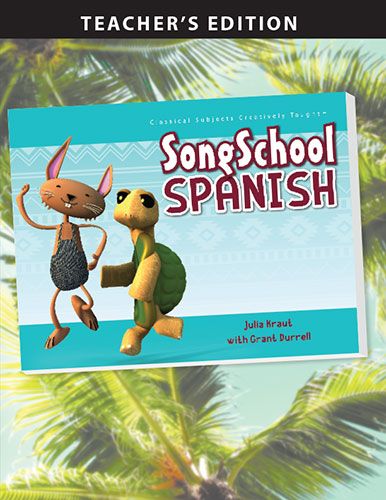

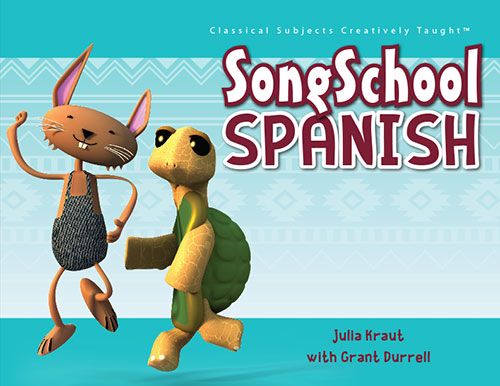

























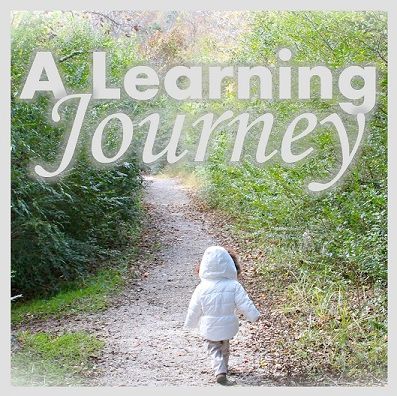






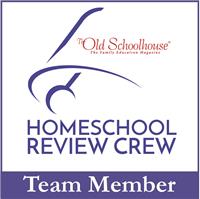
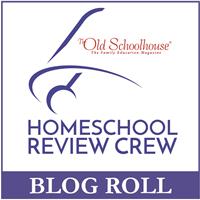





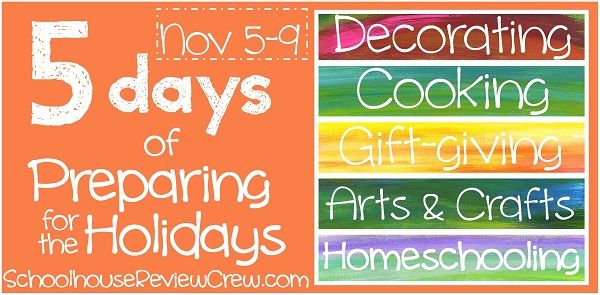
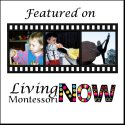


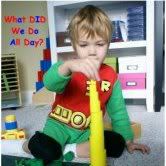



Wow - what a great review! So much information and really cute pictures too! Stopping by from the crew.....
ReplyDeleteWe are loving Song School Spanish, but we have already encountered an error in the first 3 chapters: They use feliz instead of alegre for feeling happy. Feliz is for wishing a happy holiday ("Feliz Navidad," "Feliz cumpleanos," etc.), and alegre is used for personal feelings. The lesson on feelings should say, "Estoy alegre," not, "Estoy feliz."
ReplyDeleteThanks for your thorough review - this is really helpful.
ReplyDelete